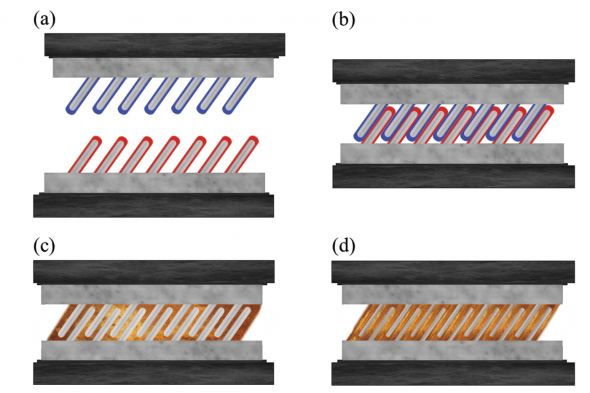Metallic glue could replace soldering & welding
Perhaps no startup was launched for a more intriguing reason than that of Northeastern’s Hanchen Huang. “MesoGlue was founded by Huang and two of his PhD students: They had a dream of a better way of sticking things together.” Those “things” are everything from a computer’s central processing unit and a PCB to the glass and metal filament in a light bulb.
The “way” of attaching them is, astonishingly, a glue made out of metal that sets at room temperature and requires very little pressure to seal. “It’s like welding or soldering but without the heat,” says Huang, Professor and Chair, Department of Mechanical and Industrial Engineering.
In a paper, published in the January issue of Advanced Materials & Processes, Huang and colleagues, including Northeastern doctoral student Paul Elliott, describe their latest advances in the glue’s development. The curiosity was piqued: Soldering with no heat? The university asked Huang to elaborate.
“Both ‘metal’ and ‘glue’ are familiar terms to most people, but their combination is new and made possible by unique properties of metallic nanorods—infinitesimally small rods with metal cores that we have coated with the element indium on one side and galium on the other. These coated rods are arranged along a substrate like angled teeth on a comb: There is a bottom ‘comb’ and a top ‘comb.’ We then interlace the ‘teeth.’ When indium and galium touch each other, they form a liquid. The metal core of the rods acts to turn that liquid into a solid. The resulting glue provides the strength and thermal/electrical conductance of a metal bond. We recently received a new provisional patent for this development through Northeastern University.”

a) Coated rods are arranged along a substrate, like angled teeth on a comb. b) The teeth are then interlaced. c) When indium and galium come into contact, they form a liquid. d) The metal core of the rods turns that liquid into a solid. The resulting glue provides the strength and thermal/electrical conductance of a metal bond. From “Advanced Materials & Processes,” January 2016
“The standard polymer glue does not function at high temperatures or high pressures, but the metallic glue does. The standard glue is not a great conductor of heat and/or electricity, but the metallic glue is. Furthermore, the standard glue is not very resistant to air or gas leaks, but the metallic glue is.
“‘Hot’ processes like soldering and welding can result in metallic connections that are similar to those produced with the metallic glue, but they cost much more. In addition, the high temperature necessary for these processes has deleterious effects on neighboring components, such as junctions in semiconductor devices. Such effects can speed up failure and not only increase cost but also prove dangerous to users.”
“The metallic glue has multiple applications, many of them in the electronics industry. As a heat conductor, it may replace the thermal grease currently being used, and as an electrical conductor, it may replace today’s solders. Particular products include solar cells, pipe fittings and components for computers and mobile devices.”
Image description: A schematic illustrating applications of metallic glue: a) A CPU on a printed circuit board connected to a heat sink. b) A surface mount device being attached to a printed circuit board. c) A press-fit pipe fitting for environments where welding is dangerous or impossible. d) A glass plate being attached to metal with a different thermal-expansion coefficient to cover a cavity with a hermetic seal. From “Advanced Materials & Processes,” January 2016










